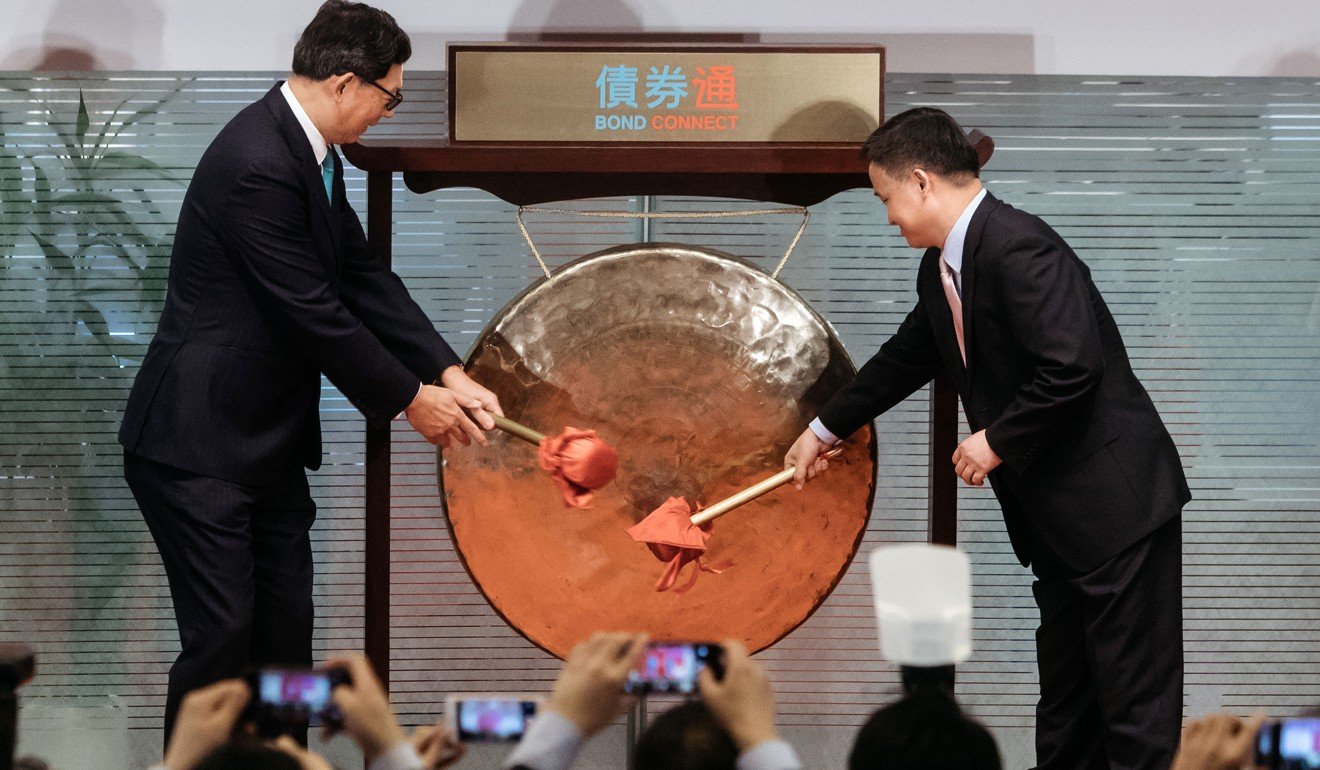Advertisement
Advertisement

Opinion
Macroscope
by Aidan Yao
Macroscope
by Aidan Yao
China’s bond market is the unlikely winner of US-China trade spat. Here's how
Aidan Yao says the silver lining to the US-China trade dispute is that it may force China to further open up its capital markets, giving investors easier access to Chinese bonds
Fears of a Sino-US trade war that could derail the global trade and economic recovery have been a major destabilising force for financial markets so far this year. Investors worry that the disruptions to the global supply chain and international trade could structurally harm the world economy.
Luckily, the path to disruption is not the only way forward. With the two sides already engaging in negotiations, the chance of avoiding an all-out trade war has increased, even though a grand deal that resolves all the trade, economic and technology-related disputes remains far off.
In the end, a watered-down version of the proposed tariffs by both sides is most likely to be implemented once the public consultation ends in the United States at the end of the month. Such an outcome is unlikely to strain the two economies much and financial markets will be relieved that economic calamity has been avoided.
However, this is unlikely to be the end of the US-China tussle, where the race for economic supremacy has become more intense than anything we have seen in the past, and is likely to remain so over the coming years.
There is a silver lining for China to the current trade dispute: the external pressure may actually accelerate China’s economic rebalancing
For China, there are obvious risks that such a restrictive, or even hostile, external environment may constrain its economic rise. Clearly, the days of selling cheap goods to rich countries are numbered, as such a model is neither conducive to managing external backlash, nor is it sustainable for China, given its ageing population and rising wages are eroding export competitiveness.
Hence, there is a silver lining for China to the current trade dispute: the external pressure may actually accelerate China’s economic rebalancing towards domestic consumption-driven growth and push the country to open up its capital markets faster.
The former will reduce China’s reliance on export growth, helping it to mitigate trade imbalances with the US. The latter will create opportunities for US investors to export financial services to China and benefit from China’s financial transformation towards a market-based system. President Xi Jinping’s speech at the Boao Forum was a clear indication that China is marching down that path – a move that was applauded by President Donald Trump too.
An integral part of this capital market liberalisation is the opening up of China’s $12 trillion bond market, the third largest in the world. The market was until recently shut out of the global financial system due to China’s strictly controlled capital account and the non-convertibility of its currency.
However, efforts to promote yuan-denominated bonds to global investors have run into stiff headwinds in recent years due to China’s currency depreciation and rising onshore bond yields. Even for those who are interested in investing, accessing the market has been a challenge, given the limited channels available to foreign investors. Finally, yuan bonds are not represented in any global fixed-income benchmarks, meaning there is no binding need for investors to gain exposure.
These structural and cyclical headwinds have made opening up the Chinese bond market difficult. However, that has started to change since 2017.

On the structural front, the Chinese authorities have stepped up efforts to liberalise the market by introducing and streamlining channels of market access. Data from the State Administration of Foreign Exchange shows that foreign ownership of yuan bonds rose by US$50 billion in the second half of 2017 after the launch of the China-Hong Kong Bond Connect.
Cyclically, investor willingness to invest in yuan bonds has also improved, thanks to the stabilisation of Chinese economy, the dissipation of capital outflows and the turnaround in the renminbi exchange rate. With China no longer seen as a destabilising force in the global economy, its relatively high interest rates and appreciating currency have started to make yuan bonds quite appealing in the current low-interest-rate environment.
Finally, the global benchmark operators are starting to embrace renminbi assets. Following the renminbi’s entrance into the International Monetary Fund’s special drawing rights basket and the MSCI adding A-shares to its global equity indices, Bloomberg in March announced the inclusion of yuan bonds to its Bloomberg-Barclays Global Aggregate Index. Together, these index inclusions could bring hundreds of billions of capital inflows to China’s bond market.
Aidan Yao is senior emerging Asia economist at AXA Investment Managers
This article appeared in the South China Morning Post print edition as: China’s bond market may turn winner from trade row with US

Post
